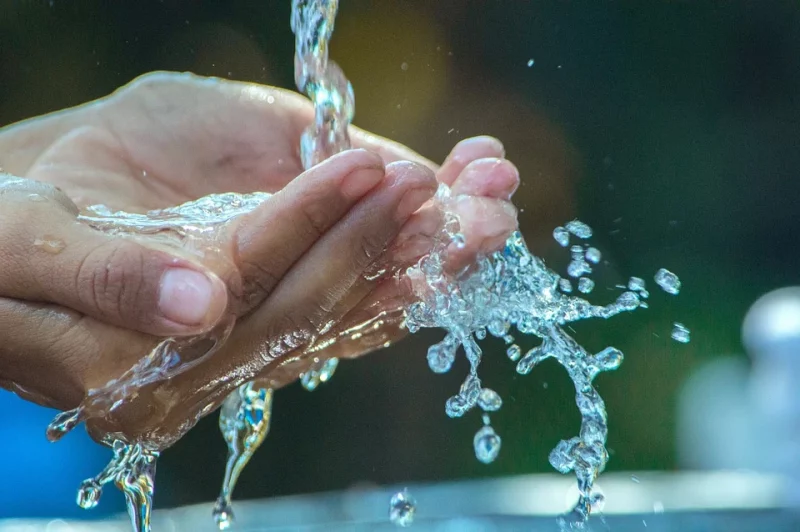What is a spring washer? It is a washer designed to absorb a shock, sustain a load and provide spring force.
There are lots of variations of designs that are evolving to serve the single or even the two essential functions. Plus, their role is to optimize the two crucial functions in the single part of specific O.D./I.D limits.
Two factors are at work why a spring washer is an essential requirement. Firstly, there is an effort to reduce end products like cost and weight. Thus, it needs multi-functioning and small assembly components like a washer that spans the hole to support the load and provides compensating spring force. Secondly, automated assembly demands some tolerance or play in the component fitting. That’s when spring tension compensates for these tolerances. There is so much more to know about this thing, so read further!
What A Spring Washer Is: Its Types
What is a spring washer? Below are the three types of spring washers:
#1. Curved disc spring same as the Belleville
This washer curves in just a single direction with only four contact points as this exerts just a little pressure than the Belleville washer.
#2. Belleville washer
Belleville washer is a conical washer or cupped spring washer with a slightly conical shape. It thus offers an axial force as it deforms.
#3. Wave washer
This type has a wave in its axial direction that provides spring pressure when you compress it. However, this does not produce much force like the Belleville washer useful as a lock washer in Germany. Only that, it is less effective when compared to other choices.
Other Classifications Of Spring Washer
Here are more of the classifications of spring washers:
WL wave washer
This washer is a lap-type form of the elastic washer. Install this in a small space, like reducing the bearing operation noise, pre-stressing its bearing, and enhancing the stability and accuracy of the bearing.
WG wave washer
This open & elastic washer installs in a small space to pre-stress the bearing, reduce the bearing operation noise, and improve the stability and accuracy of the bearing.
WN wave washer
This multilayer type of wave crest overlap comes with multiple material layers. As a result, its K value curve falls under a similar compression stroke, and it is gentler than the WL type and is also suited for even bigger elasticity. Materials utilized are stainless steel, carbon steel, copper alloy, and more.
Disc spring washer
This washer is also French Belleville. The HDS series or DIN6796 is a lock washer for screw and bolt connection manufactured and designed based on the DIN 6796 to connect high or medium strength screws and bolts. The HDS series is efficient for its elastic recovery and huge supporting load. In addition, its bolt tension withstands the slack for reasons as slack, creep, wear, contraction, seal compression, and thermal expansion.
Moreover, it increases the screw elasticity and replaces the standard spring washer. Nonetheless, it is not suited for combining flat washers and lock washers, but the disc springs in the HDS series can be easily stacked or aligned. The combination of the inversion method increases the combined superposition method and the deformation of the disc spring group. And this can increase the disc spring group’s spring force. The installation method to follow is to flatten it. The tension torque would grow a lot faster if the flattened state is closer. Even with no torque wrench, you can obtain proper bolt tension.
Advantages Of A Spring Washer
Here are the advantages that you will appreciate from using a spring washer
- Low cost in manufacturing
- Convenient installation
- Good seismic effect
- Good anti-loosening effect
Common Applications
The following are the typical applications of spring water:
- It takes up “play” in the assemblies considering cumulative commercial kind of tolerances.
- Compensates for minor dimensional changes in the assembled components.
- Eliminates rattles or endplay.
- Maintains “tightness” or fastener tension.
- Distributes the threaded fastener load such as screw or nut.
- It prevents fastenings from loosening because of vibrations.
- It acts as a spring that deflects energy when you load pressure through the washer.
- Compensates for the contraction, expansion, and cold flow of the material.
- Absorbs a load on intermittent shock and serves as a working spring that can provide a controlled reaction in the dynamic loads.
- Eliminates rattling.
- Provides a controlled reaction under such dynamic loads.
Environment
A spring washer operates in an environment, but it affects its anticipated performance considering reactive characteristics and load-bearing. Exposure to the corrosive agents and temperature are the essential washer material specifications and environmental considerations. Thus, it would help if you kept them closely in mind.
In Comparison To Flat Washer
The spring washer helps prevent loosening while it increases its pre-tightening force. But with a flat washer, it has no such function or whatsoever. What’s more, it increases the contact area that fastens and prevents friction between the workplace and the bolt. Know the difference between a plain vs spring washer.
It’s A Wrap!
Now you learn what is a spring washer when it comes to its applications, types, other classifications, advantages, environment to where it is applied, and many more. And when you compare it with a flat washer, it’s ideal to use for several purposes. You may also want to read related articles; know how to operate a Kenmore washer machine and how much is Whirlpool Cabrio washer and dryer.

